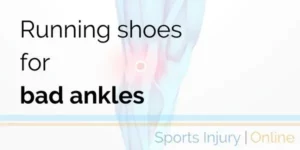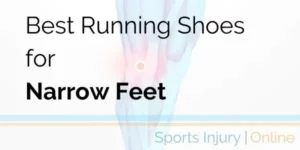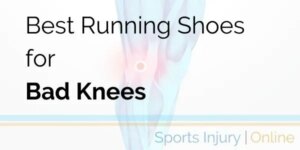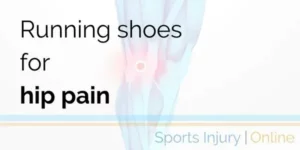Running shoes are becoming more specialised so we often get asked which are the shoes recommended by Physiotherapists.
There are specialty running shoes for different surfaces and running shoes designed for different shaped feet (like wide feet or roomy toe boxes).
Other shoes are designed to change biomechanical loading on the foot and leg, which can reduce the pressure on certain types of injuries (like Achilles pain, calf pain and Plantarfasciitis).
So we’ve surveyed our Physiotherapists (aka. “Physical Therapists” in the US) to find out their shoe recommendations for runners.

Top 10 contenders for the best running shoes for bunions

8 best running shoes for bad ankles

6 best running shoes for narrow feet

8 best running shoes for bad knees

Best 9 running shoes for a runner with hip pain

7 Best women’s running shoes for wide feet

How are these running shoes selected by Physiotherapists?
All of our shoes recommended by Physiotherapists go through a number of steps (excuse the pun) before they’re recommended.
In 2022, manufacturers will put out brand new models and existing models with updated specs and materials.
They also release a huge volume of marketing material, spruiking the amazing benefits and features of the running shoe.
Physiotherapists largely ignore all that marketing material.
It’s carefully worded to sound amazing but often doesn’t come with much substance.
And when the claims are more specific, they may not have the backing of the research community (see the legal issues that Vibram faced with their Five Fingers shoes and its marketing claims).
How Physiotherapists select their running shoes
- Review the current and latest research findings for associations between shoe features and biomechanical, technique or injury-related changes
- Combine those findings with what we already know about shoes, injuries, performance and loading patterns
- Find shoes that match the combination of specs that will benefit certain injuries or runners
- Liaise with podiatrists for their input on podiatrist recommendations for running shoes
- Speak to runners who have tried the shoes – it’s one thing to look good on a spec sheet, it’s another thing to actually feel good while running
- Discuss shoe recommendations with other Physios and their experience with the outcome of runners changing to new shoes
- And finally, we arrive at a list of the best running shoes recommended by Physiotherapists

It’s not a simple process and it can take some time. But it’s a better outcome when Physiotherapists can make shoe recommendations for runners with confidence.
We’ve developed lists of the best running shoes recommended by Physiotherapists for a range of specialty topics like women with wide feet, runners with calf pain and red running shoes (jokes, we haven’t covered color options).
Is it bad to walk in running shoes?
Running shoes are great for running, obviously.
But does that mean running shoes are not great for walking or hiking?
The answer is in the design of running shoes and how they differ from hiking boots or walking shoes.
Running shoes are designed to absorb impact on landing, as running can generate impact forces of up to 8x your bodyweight.
Hiking boots and walking shoes don’t need to absorb as much impact loading as the rate and amount of force on foot strike is much lower.
So hiking shoes are firmer and less “spongey” than running shoes.
Is it a bad thing that running shoes are more cushioned? No, but it has some downsides.
The cushioning in running shoes gradually compresses and becomes less cushioned over time.
As it compresses, it alters the shape of the shoe – you’ve probably seen an old pair of running shoes that look like they’ve collapsed inwards.
By comparison, a walking shoe is made of denser material so it doesn’t lose its shape and protection with use.
A walking shoe or hiking boot is made of a thicker upper as well compared to the lightweight mesh and fabric materials used in running shoes.
This makes the upper more durable but often compromises on the overall weight of the shoe and how well the upper can breath in hot or wet conditions.
So when it comes to walking or hiking, running shoes can offer a lighter, more cushioned feel but they compromise on durability.
Hiking boots or walking-specific shoes are heavier and less cushioned but can last for years with more resistance to wear and compression.
If you require cushioning for bad knees, you might find you get running shoes recommended by Physiotherapists for their cushioning.
If you prefer a lighter, more breathable shoe, you can also use for a running shoe for walking.
But in both cases, you’ll need to replace your running shoes every 12 months or earlier (depending on your bodyweight, distances walked and other factors.)
Otherwise if you don’t need cushioning and you prefer durability, you’ll find that you’ll have walking-specific shoes recommended by Physiotherapists as they behave more consistently over time.
If you’re hiking on trails, it’s the same basic considerations for trail running shoes vs hiking shoes – durability vs cushioning.
But it’s also worth noting that most hiking boots can be used on hard pavement without too much wear on their grip.
Aggressively grippy trail running shoes (like the Salomon Speedcross) will lose their grippy lugs very quickly if you walk or run on concrete paths.
So if you need trail shoes that will also be used on concrete or hard roads, you’ll always have hiking-specific shoes recommended by Physiotherapists instead of trail running shoes.
